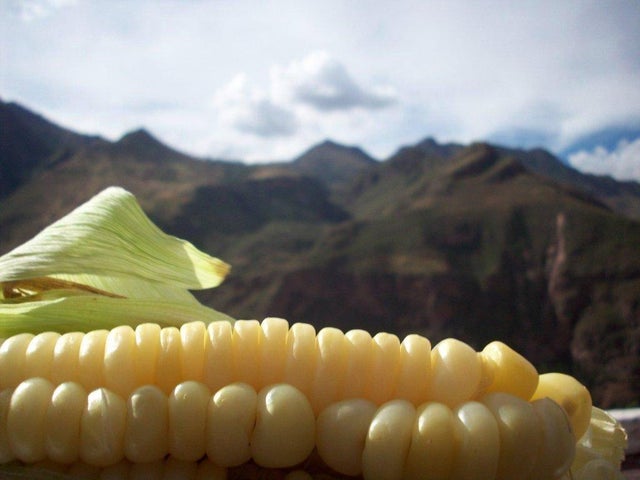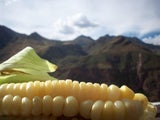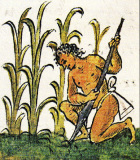- Store
- >
- CORN, non-GMO, Zea mays
- >
- Sweet Corn
- >
- Cuzco Inca Yellow Corn Seeds, Peru, 4 sizes
Cuzco Inca Yellow Corn Seeds, Peru, 4 sizes
SKU:
$14.95
3.95
23.5
$3.95 - $23.50
Unavailable
per item
Maiz Cancha Amarillo. A yellow version of ancient Inca corn. Not as large or tall as the Cuzco White Giant or Gigante. This is another heirloom corn variety direct from Peru. Can be eaten fresh or dried or toasted. Each dried seed has a bottom red tip indicating red cobs, with a bit of white on the side and a pronounced yellow top or head. Seeds vary in size and even shape.
Average of about 55 seeds per ounce.
NEW for 2023.
Corn photo by HugoMon.
THE ORIGINAL HEIRLOOM corn of the Americas and the Incas, being dried and later ground into the staple food for one of the greatest American Empires in history. This traditional plant somehow manages to grow huge two-foot long ears, with giant seeds to the size of Washington Quarters, on towering 25-foot stalks, all over the Andes with a short growing season. Might I venture to say that this is a fast grower? I believe this giant white was the father of, or forerunner to, our own Hickory King dent corn here in the USA.
This original Incan corn is used along the entire Andes range, but many believe it originated around Cusco, Peru, the Capital of the Incan Empire before becoming occupied by the invading Spaniards. Contrary to what many in America believe, the Incan people are still alive and much of their culture still remains, including this corn.
In traditional Mexican cooking, giant white corn is finely ground to make masa. Fresh masa that has been dried and powdered is called masa seca or masa harina. To make hominy, field corn is dried, then later treated by soaking and cooking the dried seeds in a dilute solution of slaked lime (calcium hydroxide).
The original cultivation of “giant white maize” (or paraqay sara in the local dialect) in the sacred Urubamba Valley of Peru can be traced to a time before Columbus, or pre-1492. References to the crop have been found in the cosmological calendar, in religious tales, and upon artifacts of pre-Columbian civilizations such as the Inca Empire. Historical evidence of crop growing (particularly maize farming) is still seen on the hillsides of the Urubamba Valley, which still has deep terraces that were dug by the Incas.
The word pozole (pronounced po-so-LAY if in Mexico, po-SOLE if in Central America, hence the interchangeable use of the word “posole”) comes from Nahuatl and means “foam.” The hominy expands while it cooks and opens in such a way that it appears to bloom—and in so doing it forms some foam on the surface of the cooking liquid. That’s how you know when it’s ready to eat.
This original Incan corn is used along the entire Andes range, but many believe it originated around Cusco, Peru, the Capital of the Incan Empire before becoming occupied by the invading Spaniards. Contrary to what many in America believe, the Incan people are still alive and much of their culture still remains, including this corn.
In traditional Mexican cooking, giant white corn is finely ground to make masa. Fresh masa that has been dried and powdered is called masa seca or masa harina. To make hominy, field corn is dried, then later treated by soaking and cooking the dried seeds in a dilute solution of slaked lime (calcium hydroxide).
The original cultivation of “giant white maize” (or paraqay sara in the local dialect) in the sacred Urubamba Valley of Peru can be traced to a time before Columbus, or pre-1492. References to the crop have been found in the cosmological calendar, in religious tales, and upon artifacts of pre-Columbian civilizations such as the Inca Empire. Historical evidence of crop growing (particularly maize farming) is still seen on the hillsides of the Urubamba Valley, which still has deep terraces that were dug by the Incas.
The word pozole (pronounced po-so-LAY if in Mexico, po-SOLE if in Central America, hence the interchangeable use of the word “posole”) comes from Nahuatl and means “foam.” The hominy expands while it cooks and opens in such a way that it appears to bloom—and in so doing it forms some foam on the surface of the cooking liquid. That’s how you know when it’s ready to eat.



